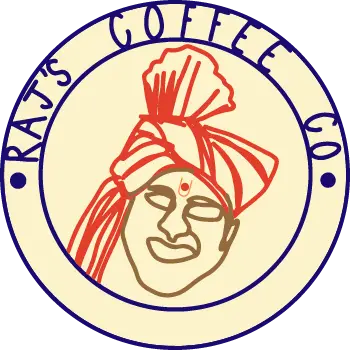Espresso is a wonderfully complex drink that has seen a rise in popularity over the years due to its bold flavor and powerful versatility. The history of espresso is a story that we’ve been very excited to learn, and we’re looking forward to sharing it with you!

What is espresso?
Espresso is a type of coffee, rather than a coffee drink – the only thing in the cup is coffee! The coffee is brewed by forcing hot water through finely-ground coffee beans at very high pressure. This method is such that, in a short period of time, coffee can be created that’s strong in both flavor and caffeine.
Espresso typically has more solids dissolved within it, making it a slightly thicker drink than typically brewed coffee. On top of that, it’s typically served in small servings – a single is 30ml, and a double is 60ml.
Where does the history of espresso originate?
Espresso originated in Italy, with the advent of the espresso machine. Throughout history, there have been a number of different people trying different methods of brewing coffee, all trying to extract and develop different flavors.
It’s likely that the name ‘espresso’ comes from a number of European words, all spelled similarly to that one, meaning to press. Applying pressure to the coffee grounds is what allows the coffee to be brewed, meaning that early branding could have reflected the idea that flavor was ‘expressed’ from the coffee grounds thanks to the pressure of the steam used in the machine.
A brief history of espresso machines
The first espresso machine was patented in 1884. The holder of that patent was Angelo Moriondo from Turin. The name was suitably complex for a patent of the time, being called ‘New steam machinery for the economic and instantaneous confection of coffee beverage’.
This brewer brewed coffee in bulk and, like all machines until 1961, makes use of a manual lever being pulled to press hot water through the coffee bed.
The next development in the espresso machine world was in 1901 when Luigi Bezzera patented an espresso machine that had a boiler built into the machinery of the brewer itself. This, combined with four ‘groups’ which held coffee through which water was pushed, launched espresso technology forward.
Bezzera’s patent was purchased by Desiderio Pavoni, who began to produce espresso machines under the name ‘La Pavoni’ – a company that’s still around today. The first espresso machine in the US was a La Pavoni, installed at Reggio’s in New York.
These early machines used a series of interconnected pipes to force steam through the coffee before water made its way through the pipes and to the coffee. This resulted in a bitter, unpleasant brew.
In 1938, a piston pump was developed. This pump enabled hot, but not yet boiling, water to be pumped through the system, enabling tastier coffee. Coffee technology then stagnated, as the second world war began the next year.
Following the war, Gaggia started producing commercial piston pump espresso machines in 1946. Gaggia is another company that still dominates the industry today.
In 1961, we came to the most recent technological innovation, giving us espresso machines that are still relatively unchanged today.
The faema company created a machine based around the pump from 1938. This pump pulled water from the mains supply directly to a boiler, and then directly to the coffee. This freshness eliminated the taste of stale water from the boiler, leading to even better-tasting coffee. The majority of modern commercial machines are based on this design.

How has it changed over time?
Interestingly, espresso itself has changed over time independently of the technological innovations that made each machine a little different from its predecessors. For example, a cultural shift of espresso comes from the UK in the 1950s.
The youth of the time had grown up with very little coffee in their diets and the world around them. It was commonly seen as an American thing, so very few British people drank a lot of coffee.
Therefore, the eternal youth counter-culture was excited to try coffee drinks when they were first made in the UK. That small explosion in popularity is what generated the modern system of espresso-based drinks we know, with espresso being a base, to which different ingredients are added to create a latte, cappuccino, or mocha, for example.
Regional variations of espresso-style coffee
There are a number of variations in espresso-style coffee, just as there are with nearly every other coffee drink we can name. Interestingly, though, after that youth movement in the UK during the 1950s, the culture of coffee hasn’t really changed from that ‘stackable’ view of different ingredients. Still, a coffee shop will orient a menu around the idea that espresso is a base to which other ingredients are added.
One of the only times in which this hasn’t been the case was when the latte was first introduced to the US. In that instance, around the late 1980s and 1990s, the latte was viewed as a drink in its own right, the elements that made it a little less important. Espresso wasn’t a building block in the makeup of the latte, but rather just something that had to be leaped over on the way to getting a tasty, creamy, syrupy latte.

A great example of a regional variation of espresso is the espresso Cubano. This is something that’s really adored the world over and is made in an interesting way.
After the coffee is tamped into the portafilter of an espresso machine, a layer of brown sugar is packed on top, and similarly tamped down to high density. This sugar is then melted as the water is pressed through the coffee, leading to a sweet and interesting twist on the espresso.
Conclusion
The espresso is such a wonderfully complex drink that it’s unlikely it will be forgotten any time soon. Instead, it’s much more likely that the powerful flavors will be used to invent new coffee drinks far into the future!

